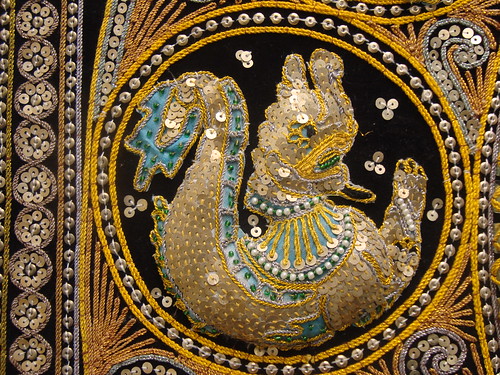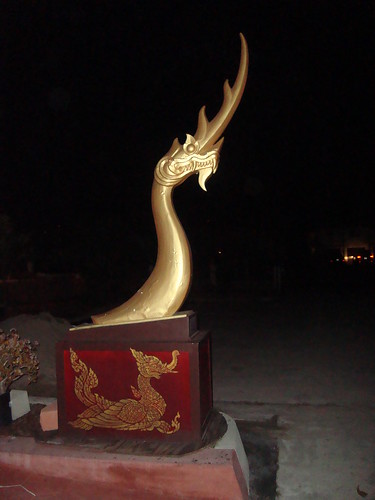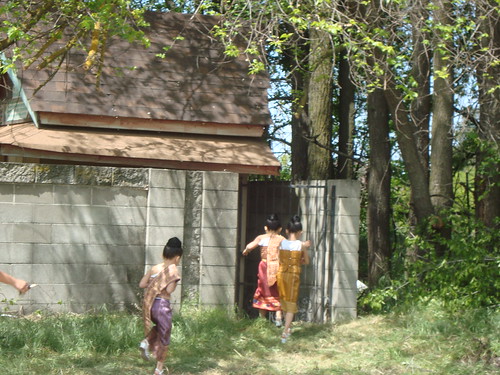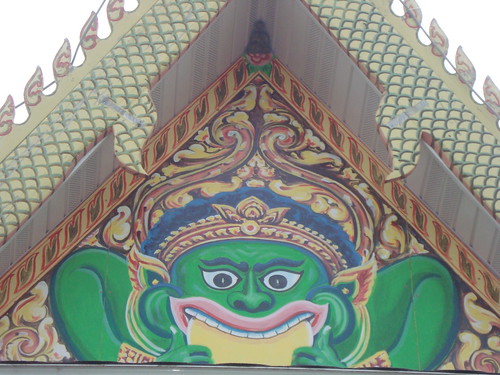
At the present moment, Lao astrological animals correspond with those of the Chinese Zodiac, so if you're writing a story set between 1900-1999 this list may be helpful for you: http://bit.ly/19001999ChineseNewYears.
You can also of extrapolate even further with a good spreadsheet program to identify years and dates all the way back to the years before the formation of Lan Xang, and their corresponding animals.
But I'd take note of this with some degree of caution. It is not thoroughly documented that all of the cities or kingdoms recognized the same year or observed the new years on the same dates (although it is highly likely). In another post I will address some research that suggests some older Lao also have a secondary set of animals, referred to as star animals, integrated into their cosmology. (However, I'm looking to find more corroboration of this.)
But back to the New Years, which can be useful milestones in a story using decolonized time. Remember that Lao New Years were mostly celebrated in the 4th month, approximately around the 15th, but this is NOT exact.
It should also be apparent, but for emerging writers, don't have characters go running around saying things like "It's May 24th, The Year of the Metal Rat." There several problems with this, but suffice it to say that its biggest problem would be disruption to the suspension of disbelief. Try to be more organic with references that ground the story in a specific time.
I would argue that for alternative history stories, you have a little more leeway with the dates between 1700-1800 on the Western calendar because there's so little documentation that survived in that era, so you could take some creative license.

This does not specifically guarantee that a particular city in Laos or Lao America celebrated their Pi Mai Lao festival on that week. As we've seen in recent years in the US, some communities wait for different weekends in order not to conflict with another city's celebration, or because they couldn't reserve certain spaces to hold a celebration. In the US, student groups and other community groups have often held celebrations at different dates in order to avoid conflict with spring break, finals, Easter, and the official celebrations at their local wat lao.

To complicate matters, the first month of the Lao New Year is actually considered to be in December but festivities are delayed until April when days are longer than nights. Also, during April, it is more enjoyable for the Lao to douse each other in water during the Pi Mai Lao celebration because the temperatures are higher. It also makes more sense to invite the rain during this time. Lao will douse statues of the Buddha standing in the 'calling for rain' position for good luck.
These celebrations last for three days typically. There are many beauty pageants in Laos, during this time, but many paid attention to the observances in Luang Prabang - which was widely known for its Nangsoukhane or Nang Songkran pageant. In each city's pageant, there are seven contestants, each one symbolizing one of King Kabinlaphom's seven daughters.

When you're using decolonized times for stories set in Laos, remember that as of 2011, the year is 2554, and it's the same year in Thailand. But Cambodia recognizes the year 2555. In China, if you're going old school, it's 4708 or 4648, but apparently few people use that calculation today. In Burma, it's the year 1373.
Interestingly, in Thailand, it is believed that for good fortune, at least once in your lifetime you should make a pilgrimage to the specific wat associated the astrological sign of your birth year.
This doesn't even begin to take into account the calendars of many of the 82+ other cultures of Southeast Asia, particularly the Hmong, Mien, Khmu, Lahu, Tai Dam and others. Some follow the majority calendar system of the region they're in, others do not, so it is not advised to make assumptions.
As a side note: if you find yourself working with Vietnamese characters in story, you may want to consider that in the Vietnamese zodiac, the cat replaces the "rabbit" of the Chinese zodiac. So, for example, a child born in the Chinese year of the rabbit is considered to be born in the Vietnamese year of the cat (mèo/mão). Almost every other animal in the Vietnamese zodiac corresponds to the same animals as the Chinese zodiac for the remaining 11 years. It should be noted that the "ox" of the Chinese zodiac is usually considered to be a water buffalo (sửu/trâu) in the Vietnamese zodiac.
No comments:
Post a Comment